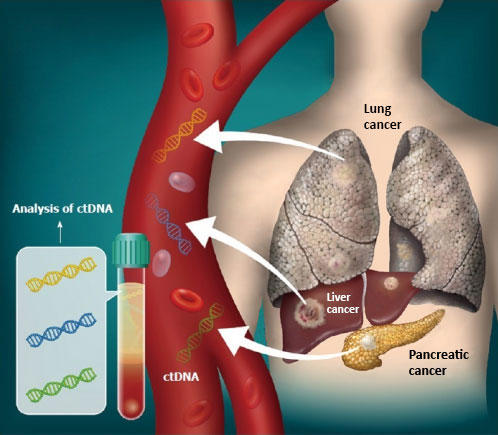Breasts are made up of a mix of fatty tissue, the fibrous tissue that provides support and structure, and the glandular tissue associated with milk production. Together, the latter two are known as fibroglandular tissue.

Breast density refers to the proportion of these two types of tissue. The higher the proportion of fibroglandular tissue, the denser the breast.
Having dense breasts is very common, and while there is no correlation between size and density, it can be related to a lower body mass index and to being younger, as density tends to decrease after menopause.
Very dense tissue can be important for two reasons.
It makes it challenging to distinguish between the dense tissue and tumours, as both appear white on mammograms. This masking effect can delay diagnosis and treatment, with the potential to affect patient outcomes.
It is also known to be an independent risk factor for breast cancer, though the reasons for this are not yet fully understood.
Because of this, screening services in NSW have begun providing ratings of A (least dense) to D (most dense) on routine mammogram reports. C and D are considered to be high density.
Learning that you have dense breasts can be surprising, but it is not automatically a cause for concern.
So, what are the next steps?
Firstly, it is important to understand that high density is just one piece of a larger puzzle when it comes to breast cancer risk.
A person's overall risk is determined by a range of factors, of which density is one. Family history, lifestyle choices and previous breast lesions all have a significant role to play.
This makes a one-size-fits-all approach to risk screening less helpful than a personalised approach that considers all the risk factors and available information.
More screening is not necessarily better
There is a lack of conclusive evidence on the best screening practices for people with dense breasts.
Studies suggest that other supplemental methods such as breast MRI can detect cancers earlier in women with high breast density, but it remains unclear how frequently supplemental imaging should be performed.
Supplemental imaging also comes with its own challenges. It may result in higher exposure to ionising radiation, which can increase the risk of cancers, and it can increase the number of false positives, which may result in unnecessary invasive procedures and significant anxiety for patients.
Ultimately, more robust evidence is needed before we can say conclusively if current screening regimens are sufficient or if they should be adjusted based on breast density alone.

While BreastScreen NSW is routinely providing breast density ratings, there is not yet a gold-standard approach to measuring and reporting breast density across radiology practices throughout Australia.
Standardised methods are important if we are to ensure consistency and accuracy in reporting. Without it, people might receive conflicting information from different mammography centres, leading to confusion and potential mismanagement of their health.
The personalised approach
A personalised approach to breast cancer screening is important. Rather than focussing on the notification of breast density alone from BreastScreen NSW, a more holistic approach is recommended, by placing breast density within a patient's comprehensive risk profile that incorporates all the known risk factors.
Validated predictive tools like the IBIS model, which calculates a lifetime risk score incorporating breast density, can help guide both clinicians and patients in making informed decisions about screening frequency and the need for supplemental imaging.
This individual approach ensures that everyone receives the most appropriate care based on their unique risk profiles, rather than applying a single recommendation across the board.
Regardless of breast density, the importance of breast awareness cannot be overemphasised.
Be aware of your personal risk factors, and engage in regular screening practices, including monthly self-examinations and two-yearly mammograms.
Lifestyle modifications, like reducing alcohol intake, quitting smoking, and maintaining a healthy weight, can also help to reduce the risk of breast cancer.
If you have any concerns about your breasts, your first port of call should always be your GP, as they will be able to provide you with good advice.

Dr Negin Sedaghat FRACS (pictured above) is a breast, endocrine and general surgeon with significant expertise in breast surgical oncology at Macquarie University Hospital.






